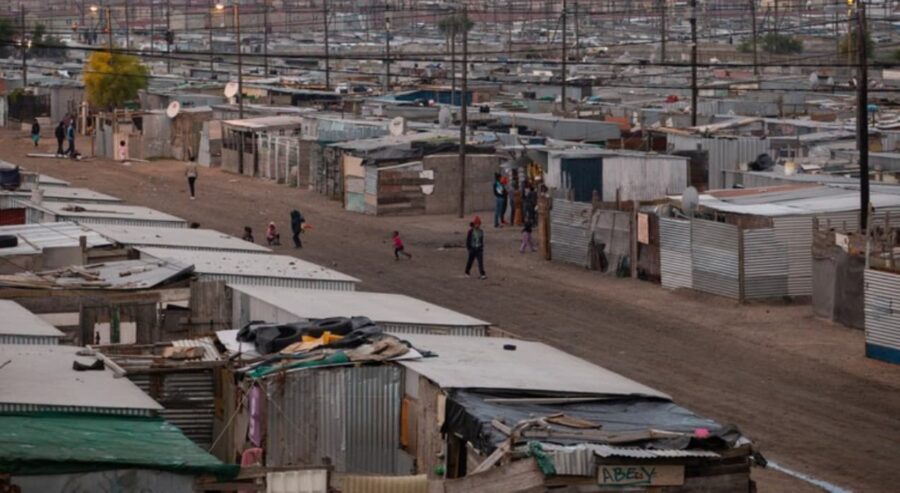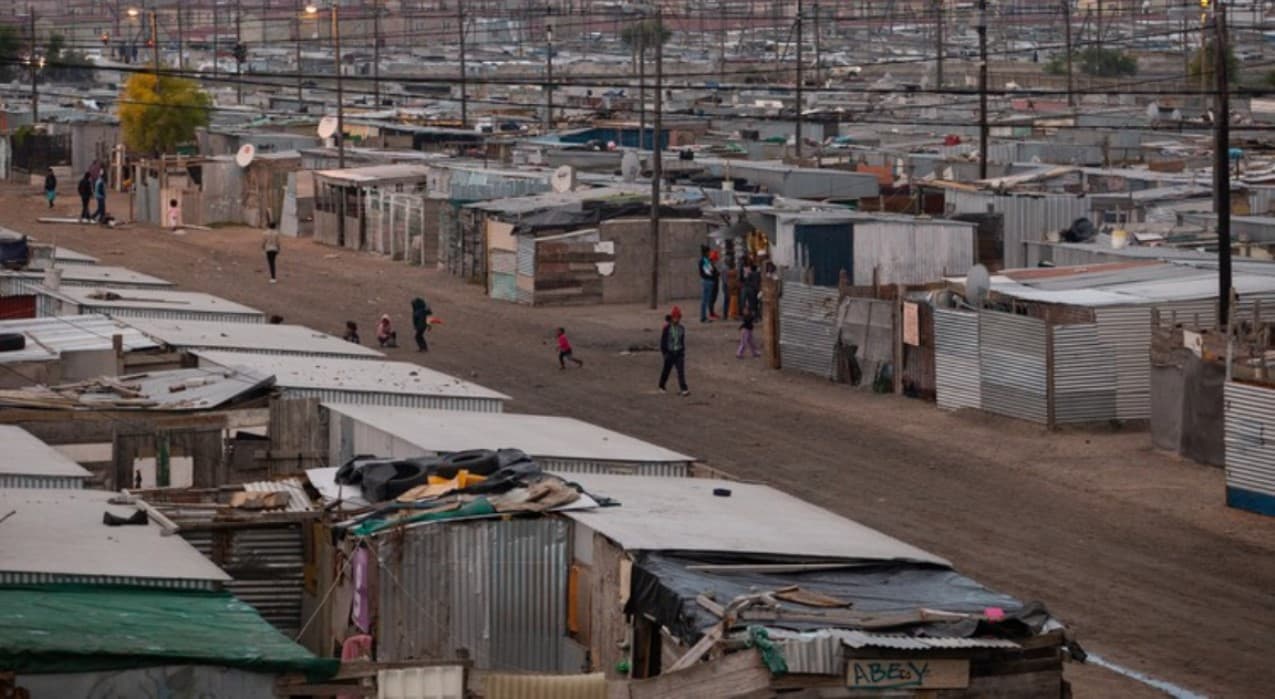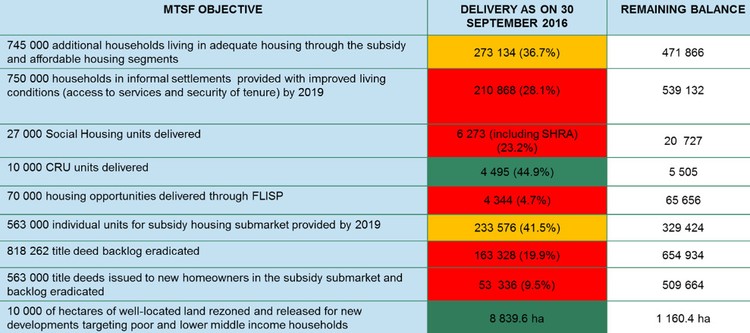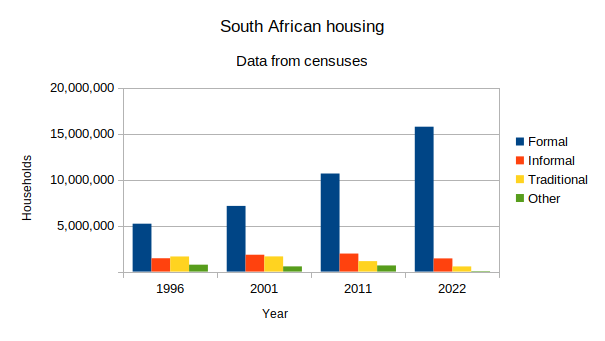
Housing in South Africa: How have we done since 1994?
We’ve made progress but the quality of the data is poor, especially the latest census

Houses for all South Africans was one of the main goals of the ANC government when it was elected in 1994. Nearly 30 years later, and with the 2022 census released this month, how much progress has been made?
- The state, according to its records, has provided 5-million brick-and-mortar houses or serviced plots since 1994.
- There are 2.5-million households on the National Housing Needs Register according to the Minister of Human Settlements.
- Yet the latest census indicates that 1.4-million households are informal (shacks).
- There appear to be serious shortcomings with the latest census and the number of informal households has likely been severely undercounted.
To put this article together we looked at several documents published by the government, including the censuses. There are severe shortcomings with the data as we show.
Also, reliable data on people who are homeless, as in living on the street, is hard to come by, so it is not included in this article. However, it is in the low hundreds of thousands at most, which is a serious concern, albeit a very small proportion of the population.
We also don’t consider quality of formal state housing or location in this article.
How many houses has the state provided?
In 1994, the government started providing houses through the Reconstruction and Development Programme (RDP), now called Breaking New Ground (BNG).
This was required by the Constitution. Section 26 says that everyone has the right to have access to adequate housing. It also says that the state must take reasonable legislative and other measures, within its available resources, to realise this right.
South Africa’s original goal with the Breaking New Ground program was to eradicate informal housing by 2014.
The state has provided approximately 5-million “housing opportunities” from 1994 to February 2022, according to a May 2022 Department of Human Settlements (DHS) report. A housing opportunity can be an actual house or only a plot of land with access to piped water and electricity. Beneficiaries are required to pay for water and electricity and municipal rates.
There are 2.5-million households on the National Housing Needs Register as of February 2023, according to the Minister of Human Settlements. In Cape Town alone, there are 375,150 people on the register, News24 reported in May. It’s hard to know though how accurately these numbers reflect actual demand.

In what kind of houses do people live?
There have been censuses in 1996, 2001, 2011 and 2022. Households are divided into “formal” (which means a brick and mortar home), “informal“ (which means a shack in an informal settlement or backyard), ”traditional“ (huts, rondavels or other structures made of clay, mud, reeds or local natural materials), and “other”.
The table and graph below, whose numbers are taken directly from census documents, show how this has changed over time.
| Year | Formal | Informal | Traditional | Other | Total |
| 1996 | 5,211,727 | 1,453,015 | 1,644,388 | 750,441 | 9,059,571 |
| 2001 | 7,147,438 | 1,836,232 | 1,654,787 | 567,249 | 11,205,705 |
| 2011 | 10,677,413 | 1,962,733 | 1,139,916 | 670,099 | 14,450,161 |
| 2022 | 15,776,130 | 1,435,535 | 560,415 | 56,698 | 17,828,778 |

If the above numbers are taken at face value, then the percentage of households living in informal housing has dropped from 16% in 1996 to nearly 14% in 2011 to 8% in 2022. This would be a significant accomplishment. But caution is needed.
StatsSA estimates that the 2022 census has a 31% undercount. This is extremely large which is perhaps why we can see anomalies in the above data:
- From 1996 to 2011, the number of informal households rose each census. Yet in 2022, it dropped. We are unaware of any plausible reason why this should have happened.
- The “other” category was several hundred thousand for 1996, 2001 and 2011, but suddenly dropped to less than 60,000 in 2022. This appears implausible.
- While the number of traditional households has been dropping across censuses, it seems unlikely that the massive drop between 2011 and 2022 reflects people moving directly from traditional houses in places like the Eastern Cape to formal ones, rather than informal ones in Johannesburg and Cape Town.
- There is a huge discrepancy between the 2.5-million households on the National Housing Needs Register and the 1.4-million households living in informal structures given by the census.
ALSO READ: Over 100 grannies march in Durban to demand better healthcare and housing
The census 2022 estimate of informal houses is likely a severe undercount. But even on its own terms, 1.4-million households in need of decent housing is a massive undertaking.
While the state has provided many people with brick-and-mortar homes, or a piece of land they can call their own, we have a long way to go to realise Section 26 of the Constitution.
Published originally on Groundup | Sonia A. Rao and Nathan Geffen
